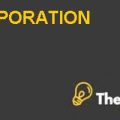
Sasquatch Dolls
Introduction:
The report presents a case about Sasquatch dolls, which was a Pennsylvania based company and was specialized in the manufacturing of line of foam rubber dolls. The company had enjoyed tremendous success over the past few years and the company was considering expanding in smaller baby version in near future. Further, a meeting has been arranged between the board members to discuss the year-end performance of the company and to identify the employees, who had worked towards the achievement of the corporate mission of the organization.
Problem Statement:
The management of the company was concerned about the evaluation of the manager’s performance in order to identify the employees, who have worked towards the achievement of the budgeted goal of the company in order to compensate their efforts.
1. What was the budgeted cost per doll? Explain, with an approximate standard cost card.
Our analysis in Appendices 1 shows that the total budgeted cost per doll is $15.30. It has been calculated as each doll requires 5 lbs material to complete and the average standard cost per lbs is $0.72, hence, providing a cost per material of $$3.6. Further, the company requires 0.962 hr/doll to complete and the standard rate per hour is $8, hence, a direct labor of $7.696 per unit will be required to complete a single doll.
Additionally, other variables such as indirect labor, power and supplies have been calculated on number of units produced, which gave figures of $0.6, $0.15 and $0.75 per unit respectively. Similarly, other fixed cost such as repair and maintenance along with depreciation and insurance are calculated on budgeted number of units, which gives a figure of $0.6, $1.4 and $0.5 per unit respectively.
2. Prepare a (balanced) evaluation of Sarah Lanman's performance as production manager. Be as specific as possible. Evaluation criteria would include effectiveness and efficiency. You might start with as many variances as you can compute, and make an interpretive judgment as to responsibility.
As being the production manager, Sarah Lanman’s core responsibility would be to effectively and efficiently utilize the resources so as to maximize profits of the organization.
A direct material price variance has been calculated, which provides a favorable variance of $125,000 that indicates that the company succeeds to purchase the raw material cheaper than their standard cost. The company may have achieved a favorable material price variance due to strong negotiation skills or there can also be a possibility that there is a fall in market prices, which lowers the price of the material.
Material usage variance has also been calculated, which provides a favorable variance of $180,000, this is because the production manager have adopted strong quality control checks that reduces the material content of each doll from 5lbs to 4.5lbs. Further, improved savings in material usage has been adopted from third quarter, so if we revise the standard quantity by considering the use of 5lbs in first two quarters and 4.5lbs in last two quarters then it will provide an adverse result of $234,000, which indicates that there are still some loopholes that can be avoided by the company. Overall improvement in production process by the production manager tends the company to report substantial savings.
Labor rate variance has been calculated to determine whether the actual rate paid to workers was lower than expected or not. Our analysis in Appendices 2 shows that the company reports an adverse labor rate variance of $1,753.2 that is not a good indication for the company because it will let the company to suffer an increase in cost. Further, increased payment may arise due to the payment of unplanned overtime or bonus or there can be a possibility that there will be an increase in general wage rate.
Labor efficiency variance has also been calculated and our analysis in Appendices 2 determines that the company reported an adverse labor efficiency variance of $2,223.2. It is because there was idle time of 153,000 hours for which the company paid half of the wage rate to the labor, which led them to report high labor cost.
Further, when the effect of idle hours have been eliminated in order to determine the actual labor efficiency then it provides an adverse variance of $999.2, which indicates that the company does not utilize its labor force efficiently. Further, another reason for adverse efficiency variance may be that the company uses poor quality material, which leads them to report a favorable material price variance, in contrast to an adverse labor efficiency variance.
In case the company reports an adverse efficiency variance then the indirect labor will also report an adverse variance. Our analysis in Appendices 2 shows that the company reports an adverse indirect labor price variance of $136,000, so the organization shall consider taking steps to increase the efficiency of labor so as to avoid adverse labor price variance........................
This is just a sample partial case solution. Please place the order on the website to order your own originally done case solution.











